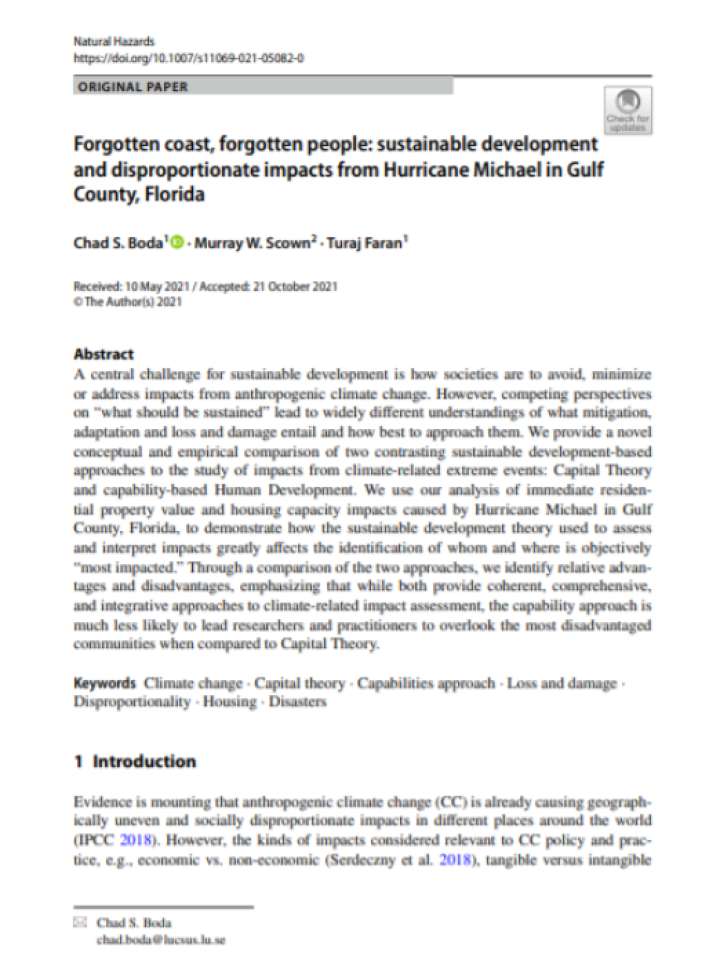Forgotten coast, forgotten people: Sustainable development and disproportionate impacts from Hurricane Michael in Gulf County, Florida
This study provides a novel conceptual and empirical comparison of two contrasting sustainable development-based approaches to the study of impacts from climate-related extreme events: Capital Theory and capability-based Human Development. The analysis of immediate residential property value and housing capacity impacts caused by Hurricane Michael in Gulf County, Florida, is used to demonstrate how the sustainable development theory used to assess and interpret impacts greatly affects the identification of whom and where is objectively “most impacted.” This analysis attempts to help overcome the central challenge for sustainable development in how societies are to avoid, minimize or address impacts from anthropogenic climate change. Competing perspectives on “what should be sustained” lead to widely different understandings of what mitigation, adaptation and loss and damage entail and how best to approach them.
This article finds that the interpretation of the impacts through two different theories of sustainable development show that theory adopted to analyze impacts can lead to dramatically different appraisals of where and whom is considered “most impacted.” Capital Theory offers a coherent and operational means for consistently measuring impacts to capital stocks, but also tends to emphasize expensive property impacts rather than severe property impacts. The capabilities approach provides a means for disaggregating impacts and highlighting those areas with the most severe impacts, but its informational requirements make it incompatible with much current practice. In terms of social justice, equity and who bears the brunt of impacts from natural hazards, the analysis of the Capital Theory approach demonstrates that, within this approach, the losses that people in poorer neighborhoods suffer are generally going to be drowned out by the figures from wealthier neighborhoods. In contrast, the analysis of the capability approach shows that this perspective draws attention to those residents least able to absorb and recover from the impacts of an extreme event, which often bear the brunt disproportionately large. The study concludes that the capability approach is much less likely to lead researchers and practitioners to overlook the most disadvantaged communities when compared to Capital Theory.
Explore further
